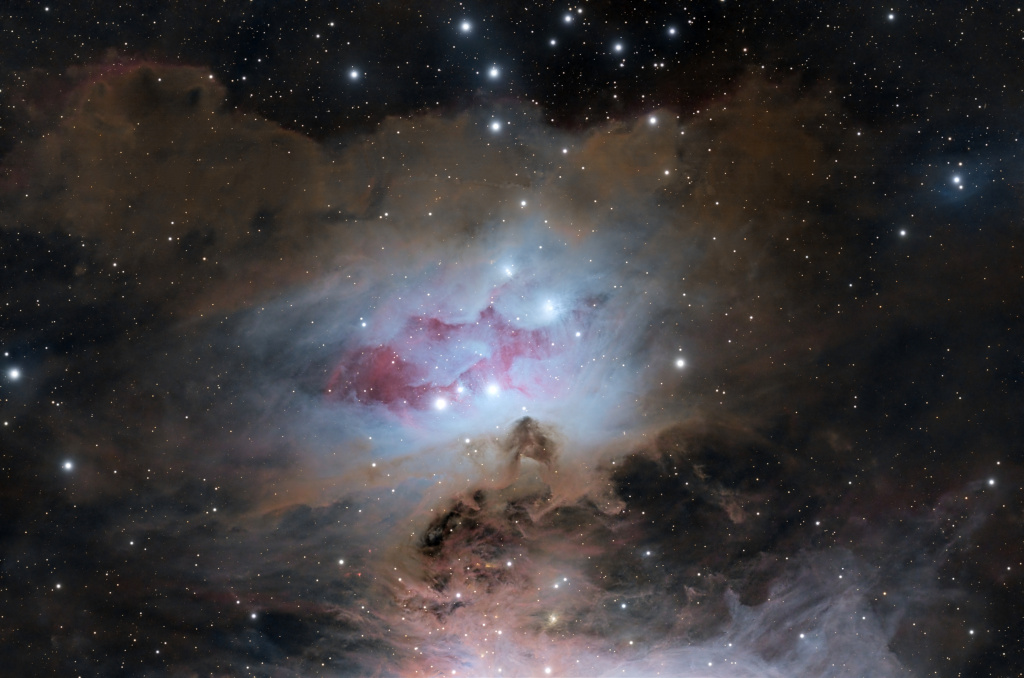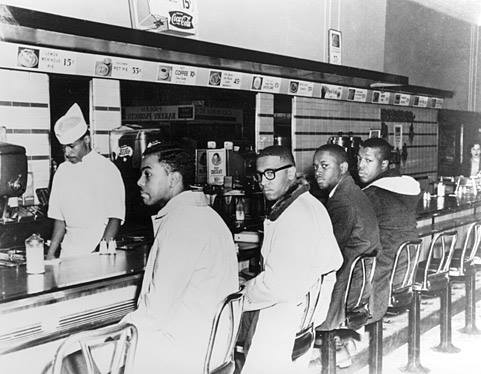Blog
John Richard Handy III (born February 3, 1933) is an American jazz musician most commonly associated with the alto saxophone. He also sings and plays the tenor and baritone saxophone, saxello, clarinet, and oboe.
Handy was born in Dallas, Texas, United States. He first came to prominence while working for Charles Mingus in the 1950s. In the 1960s, Handy led several groups, among them a quintet with Michael White, violin, Jerry Hahn, guitar, Don Thompson, bass, and Terry Clarke, drums. This group’s performance at the 1965 Monterey Jazz Festival was recorded and released as an album; Handy received Grammynominations for “Spanish Lady” (jazz performance) and “If Only We Knew” (jazz composition).
After completing high school at McClymonds High School in Oakland, he studied music at San Francisco State College, interrupted by service during the Korean War, graduating in 1958. Following graduation, he moved to New York City. Handy has taught music history and performance at San Francisco State University, Stanford University, the University of California, Berkeley, and the San Francisco Conservatory of Music.
In the 1980s he worked in the project Bebop & Beyond, which recorded tribute albums to Dizzy Gillespie and Thelonious Monk. His son, John Richard Handy IV, is a drummer who has played with Handy on occasion.
In 2009, he received the Beacon Award from SF JAZZ.
more...John Watson Jr. (February 3, 1935 – May 17, 1996), known professionally as Johnny “Guitar” Watson, was an American musician and singer-songwriter. A flamboyant showman and electric guitarist in the style of T-Bone Walker, his recording career spanned forty years, and encompassed rhythm and blues, funkand soul music.
Watson recorded throughout the 1950s and 1960s with some success. His creative reinvention in the 1970s with funk overtones, saw Watson have hits with “Ain’t That a Bitch” and “Superman Lover”. His highest charting single was 1977’s “A Real Mother for Ya”.
Watson was born in Houston, Texas. His father John Sr. was a pianist, and taught his son the instrument.But young Watson was immediately attracted to the sound of the guitar, in particular the electric guitar as played by T-Bone Walker and Clarence “Gatemouth” Brown.
His grandfather, a preacher, was also musical. “My grandfather used to sing while he’d play guitar in church, man,” Watson reflected many years later. When Johnny was 11, his grandfather offered to give him a guitar if, and only if, the boy didn’t play any of the “devil’s music”. His parents separated in 1950, when he was 15. His mother moved to Los Angeles, and took Watson with her.
more...Lillian Hardin Armstrong (née Hardin; February 3, 1898 – August 27, 1971) was an American jazz pianist, composer, arranger, singer, and bandleader. She was the second wife of Louis Armstrong, with whom she collaborated on many recordings in the 1920s.
Her compositions include “Struttin’ with Some Barbecue”, “Don’t Jive Me”, “Two Deuces”, “Knee Drops”, “Doin’ the Suzie-Q”, “Just for a Thrill” (which was a hit when revived by Ray Charles in 1959), “Clip Joint”, and “Bad Boy” (a hit for Ringo Starr in 1978). Armstrong was inducted into the Memphis Music Hall of Famein 2014.
She was born Lillian Hardin in Memphis, Tennessee, where she grew up in a household with her grandmother, Priscilla Martin, a former slave from near Oxford, Mississippi. Martin had a son and three daughters, one of whom was Dempsey, Lil’s mother. Priscilla Martin moved her family to Memphis to escape from her husband, a trek the family made by mule-drawn wagon. Dempsey married Will Harden, and Lil was born on February 3, 1898. Will died when Lil was seven, though Dempsey later remarried to John Miller.
During her early years, Hardin was taught hymns, spirituals, and classical music on the piano. She was drawn to popular music and later blues.
more...Jakob Ludwig Felix Mendelssohn Bartholdy (3 February 1809 – 4 November 1847), born and widely known as Felix Mendelssohn, was a German composer, pianist, organist and conductor of the early Romantic period. Mendelssohn’s compositions include symphonies, concertos, piano music, organ music and chamber music. His best-known works include the overture and incidental music for A Midsummer Night’s Dream (which includes his “Wedding March“), the Italian Symphony, the Scottish Symphony, the oratorio St. Paul, the oratorio Elijah, the overture The Hebrides, the mature Violin Concerto and the String Octet. The melody for the Christmas carol “Hark! The Herald Angels Sing” is also his. Mendelssohn’s Songs Without Words are his most famous solo piano compositions.
Mendelssohn’s grandfather was the renowned Jewish philosopher Moses Mendelssohn, but Felix was initially raised without religion. He was baptised at the age of seven, becoming a Reformed Christian. He was recognised early as a musical prodigy, but his parents were cautious and did not seek to capitalise on his talent. His sister Fanny Mendelssohn received a similar musical education and was a talented composer and pianist in her own right; some of her early songs were published under her brother’s name and her Easter Sonata was for a time mistakenly attributed to him after being lost and rediscovered in the 1970s.
Mendelssohn enjoyed early success in Germany, and revived interest in the music of Johann Sebastian Bach, notably with his performance of the St Matthew Passion in 1829. He became well received in his travels throughout Europe as a composer, conductor and soloist; his ten visits to Britain – during which many of his major works were premiered – form an important part of his adult career. His essentially conservative musical tastes set him apart from more adventurous musical contemporaries such as Franz Liszt, Richard Wagner, Charles-Valentin Alkan and Hector Berlioz. The Leipzig Conservatory,[n 3] which he founded, became a bastion of this anti-radical outlook. After a long period of relative denigration due to changing musical tastes and antisemitism in the late 19th and early 20th centuries, his creative originality has been re-evaluated. He is now among the most popular composers of the Romantic era.
more...The core of the Tangos is the letra, three or four octosyllabic lines. As with the Bulerías, the the first line is often repeated, and the repeated lines are balanced by a longer consequent phrase. Before a letra a Tangos may open with a guitar falseta or an estribillo, in which the singer sings a traditional melody with nonsense syllables (“le le le, ni, ni, etc.). The estribillo may return throughout the piece as a chorus after a letra. Once the letra begins it can be broken up several times with remates performed by the dancer. This usually occurs between the first and second line of the letra, and often occurs more frequently, giving the dance a improvisatory air. Thus, the letras themselves can be further broken up with remates or escobillas from the dancer or with guitar falsetas. A dancer may also choose to perform a long footwork passage accompanied by compás patterns from the guitarist and palmista (an escobilla performed “a palo seco” or dry, without guitar accompaniment). As in Bulerías, Tangos can end with a cierre – a closing pattern – that is based on a different set of chords than the letras. The dancer can also perform a cue (llamada) that leads into a traveling exit – a salida. It’s also common to end certain forms in flamenco with a macho, a transition into a faster, related form. Tangos wiil often end with a brief Rumba Flamenca. Similarly, Tientos will often end with a brief Tangos.
more...The 1970s are sometimes ignored by astronomers, like this beautiful grouping of reflection nebulae in Orion – NGC 1977, NGC 1975, and NGC 1973 – usually overlooked in favor of the substantial glow from the nearby stellar nursery better known as the Orion Nebula. Found along Orion’s sword just north of the bright Orion Nebula complex, these reflection nebulae are also associated with Orion’s giant molecular cloud about 1,500 light-years away, but are dominated by the characteristic blue color of interstellar dust reflecting light from hot young stars. In this sharp color image a portion of the Orion Nebula appears along the bottom border with the cluster of reflection nebulae at picture center. NGC 1977 stretches across the field just below center, separated from NGC 1973 (above right) and NGC 1975 (above left) by dark regions laced with faint red emission from hydrogen atoms. Taken together, the dark regions suggest the region’s popular moniker, the Running Man Nebula. At the estimated distance of Orion’s dusty molecular cloud this running man would be about 15 light-years across.

Graham William Nash OBE (born 2 February 1942) is an English-American musician, singer, songwriter, photographer, and activist. He is known for his light tenor voice and for his contributions as a member of the Hollies and Crosby, Stills & Nash.
Nash is a photography collector and a published photographer. He was inducted into the Rock and Roll Hall of Fame as a member of Crosby, Stills & Nash in 1997 and as a member of the Hollies in 2010. He was appointed an Officer of the Order of the British Empire (OBE) in the 2010 Birthday Honours List for services to music and to charity.
Nash holds four honorary doctorates, including one from New York Institute of Technology, one in Music from the University of Salford in 2011 and one in Fine Arts from Lesley University in Cambridge, Massachusetts.
more...Stanley Getz (February 2, 1927 – June 6, 1991) was an American jazz saxophonist. Playing primarily the tenor saxophone, Getz was known as “The Sound” because of his warm, lyrical tone, with his prime influence being the wispy, mellow timbre of his idol, Lester Young. Coming to prominence in the late 1940s with Woody Herman‘s big band, Getz is described by critic Scott Yanow as “one of the all-time great tenor saxophonists”. Getz performed in bebop and cool jazz groups. Influenced by João Gilberto and Antônio Carlos Jobim, he also helped popularize bossa nova in the United States with the hit 1964 single “The Girl from Ipanema“.
Stan Getz was born on February 2, 1927, at St. Vincent’s Hospital in Philadelphia, Pennsylvania, United States. Getz’s father Alexander (“Al”) was a Ukrainian Jewish immigrant who was born in Mile End, London, in 1904, while his mother Goldie (née Yampolsky) was born in Philadelphia in 1907. His paternal grandparents Harris and Beckie Gayetski were originally from Kyiv, Ukraine but had migrated to escape the anti-Jewish pogroms to Whitechapel, in the East End of London.
more...Edward Hammond Boatner Jr. (February 2, 1924 – July 22, 1982), known professionally as Sonny Stitt, was an American jazz saxophonist of the bebop/hard bop idiom. Known for his warm tone, he was one of the best-documented saxophonists of his generation, recording more than 100 albums. He was nicknamed the “Lone Wolf” by jazz critic Dan Morgenstern because of his relentless touring and devotion to jazz yet rarely worked with the same musicians for long. Stitt was sometimes viewed as a Charlie Parker mimic, especially earlier in his career, but gradually came to develop his own sound and style, particularly when performing on tenor saxophone,Alto saxophone and even occasionally baritone saxophone.
Edward Hammond Boatner, Jr. was born in Boston, Massachusetts, and grew up in Saginaw, Michigan. He had a musical background: his father, Edward Boatner, was a baritone singer, composer, and college music professor; his brother was a classically trained pianist, and his mother was a piano teacher. He was given up for adoption in 1924 by his father and adopted by the Stitt family in Saginaw. He later began calling himself “Sonny”. While in high school in Saginaw, he played in the Len Francke Band, a local popular swing band.
more...On February 1, 1960, in Greensboro, North Carolina, four Black college students spark a nationwide civil rights movement by refusing to leave a “whites-only” lunch counter at a popular retail store after they are denied service. The North Carolina Agricultural and Technical State students—Ezell Blair Jr., Franklin McCain, Joseph McNeil and David Richmond—become known as the “Greensboro Four.”

There’s a giant bear on Mars—or rather a rock formation that looks remarkably like one. NASA shared the intriguing image, captured last month by the Mars Reconnaissance Orbiter, in a Wednesday release. Taken from 156 miles above Mars’ southern hemisphere, it shows two circular craters above a muzzle-shaped structure, enclosed in a circular stress fracture which forms the face. And it’s a big one. The image covers an area some 6,560 feet across, per CNET. Of course, there are no bears—giant or otherwise—on Mars. This is an example of pareidolia, the tendency to see recognizable objects in random or natural shapes.
Joseph Leslie Sample (February 1, 1939 – September 12, 2014)was an American keyboardist and composer. He was one of the founding members of The Jazz Crusaders in 1960, the band which shortened its name to “The Crusaders” in 1971. He remained a part of the group until its final album in 1991 (not including the 2003 reunion album Rural Renewal).
more...Sadao Watanabe (渡辺 貞夫, Watanabe Sadao, born 1 February 1933) is a Japanese jazz musician who plays alto saxophone, sopranino saxophone, banjo, and flute. He is known for his bossa novarecordings, although his work encompasses many styles, with collaborations from musicians all over the world.
more...Joe “Tricky Sam” Nanton(February 1, 1904 – July 20, 1946) NY, NY was an American trombonist with the Duke Ellington Orchestra.
more...James Mercer Langston Hughes(February 1, 1901– May 22, 1967) was an American poet, social activist, novelist, playwright, and columnist from Joplin, Missouri. One of the earliest innovators of the literary art form called jazz poetry, Hughes is best known as a leader of the Harlem Renaissance. He famously wrote about the period that “the Negro was in vogue”, which was later paraphrased as “when Harlem was in vogue.”
more...More Posts
- World Music Narasirato
- Daily Roots Jah Walton
- Cosmos Simeis 147
- Dexter Gordon
- José Melis
- Mildred Bailey
- World Music Trio Mandili
- Daily Roots Twinkle Brothers
- Rhythm Roots Workshop Residency @ Saint Therese Senior Living of Woodbury
- Cosmos NGC 1841
- Mitch Ryder
- Chris Anderson
- Johnny Cash
- Fats Domino
- World Drumming Weedie Braimah
- Daily Roots Kailash
- Lost Radio Hour music by Ed Volker of the Radiators
- Cosmos Phoenix Aurora over Iceland
- Hal Blaine
- René Thomas
